White-Faced Capuchin
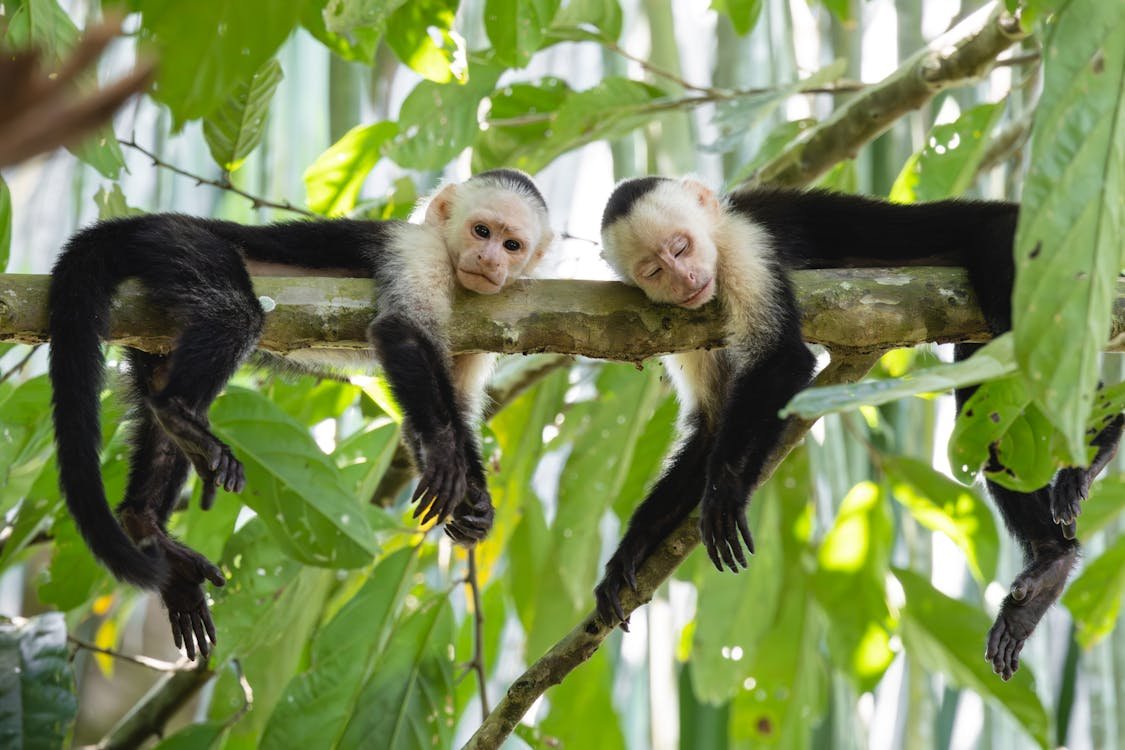
Cute, chirpy, curious, but also sneaky and sometimes downright nasty, the White-Faced Capuchins (or Monos Cariblancos) are a familiar sight in all corners of Costa Ballena. The most common of Costa Rica’s four monkey species, their presence always draws the attention of tourists and visitors who eagerly reach for their phones and cameras to capture the spectacle of a troop moving along the canopies. The locals and more seasoned residents, on the other hand, are a little more weary as sticks or something much worse can come flying at them with little notice!
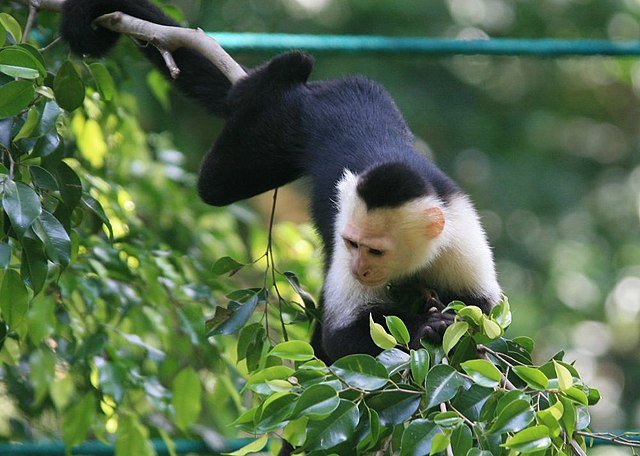
MONKEYS WITH JOBS!
Because of their intelligence, dexterity and quick learning, capuchin monkeys have found fame, fortune and employment in many industries around the world, including Hollywood.
White-Faced Capuchins make famous TV stars – Ross, in the show Friends, had a capuchin called Marcel while Jack appeared in numerous Pirates of the Caribbean films as Captain Barbossa’s monkey companion, to name a few.
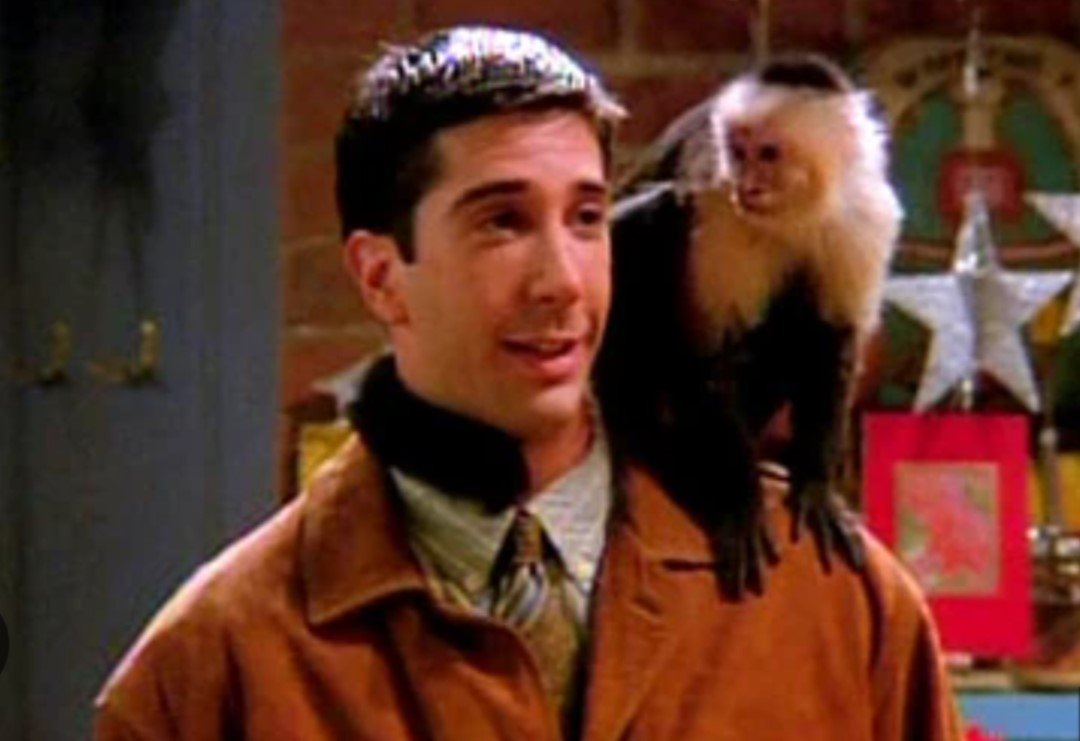
Various capuchin species have found fame and jobs performing alongside organ grinders, being trained to attract audiences and collect money with a hat, or by becoming famous street and circus performers.
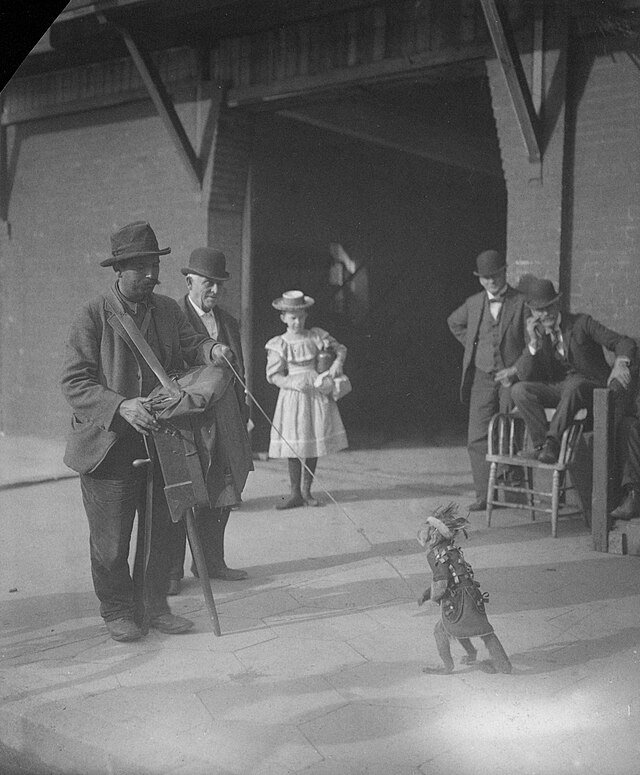
But the most respectable capuchin careers are ‘helper monkey’ jobs – these involve working alongside people who have lost mobility or dexterity. The monkeys help with tasks such as reaching objects, opening or closing doors and cabinets, brushing hair, scratching itches, turning pages in a book, fetching food and drinks, operating devices by pressing buttons, alerting for help, and providing emotional support. Wow!
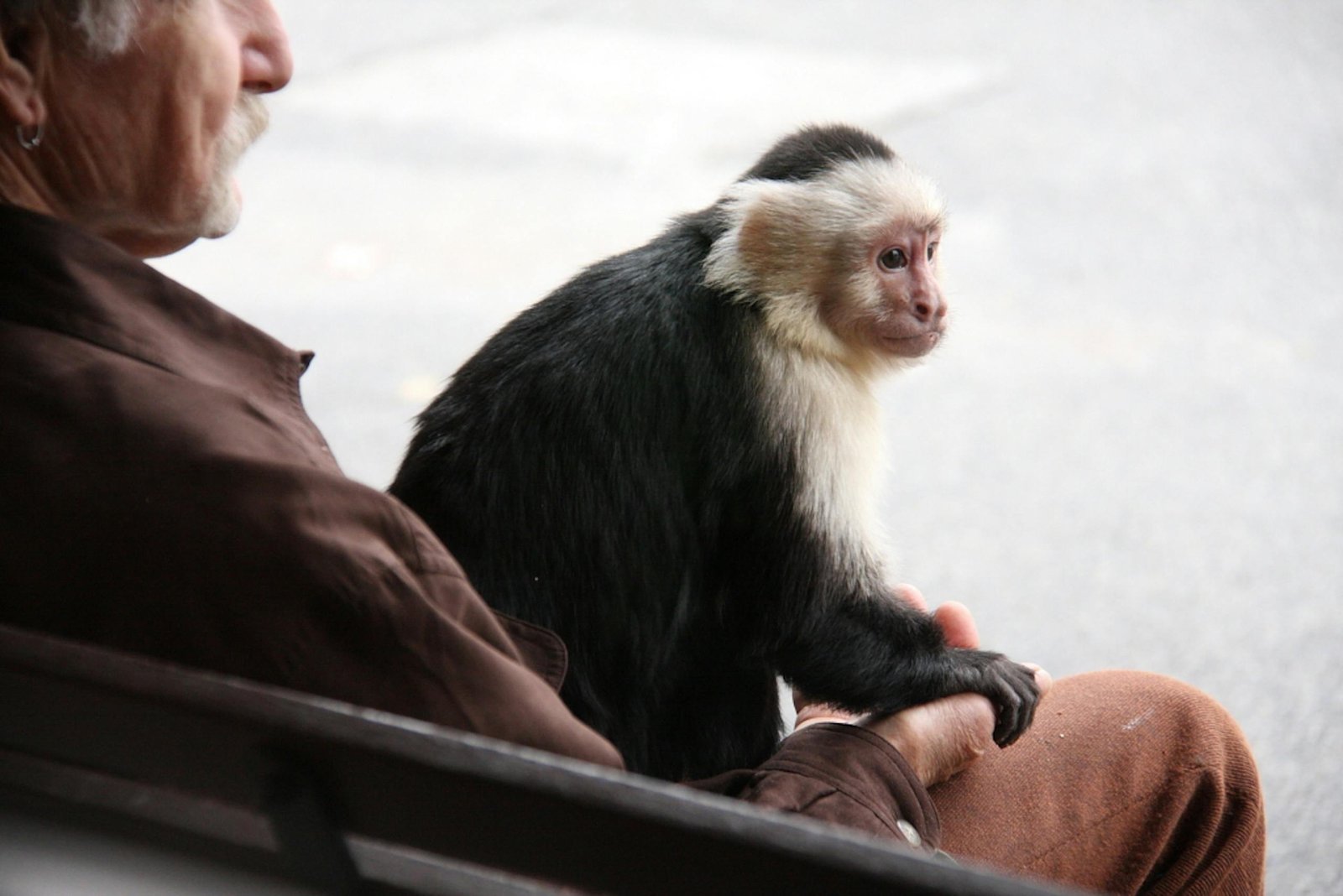
One VERY unusual career line, long lost to history, is as a greyhound-racing jockey. It is a rather cruel practice, as Capuchins were attached to greyhound dogs and forced to ‘jockey’ them during 500 meter races – although the degree of the monkeys’ strategy remains unknown. The practice started in Sydney in the late 1920s, gaining popularity into the 1930s. Thankfully the ‘sport’ waned in popularity and animal rights group rallied against the practice, causing it to fall out of favor towards the late 1930s. Isolated organized races continued, with the most recent cases dating back to 1970s Mexico.
“The monkeys took to the racing with such relish that they actually became highly competitive beasts during races, even being known to use their own tails as an in-built whip to urge an extra effort out of their mount!” – 1930s newspaper article.

However even today you can find isolated cases of capuchins being forced to ride dogs at events, parties and circuses around the world. For example, in the US, a spectacle called ‘Cowboy Monkey Rodeo’ has sprung up as entertainment during Minor League Baseball games. One of the famous riders, Whiplash, makes monkey rodeo appearances in the US and all over the world – he has also secured a career in TV commercials, appeared on talk shows, and was knighted at a famous winter carnival in Minnesota.
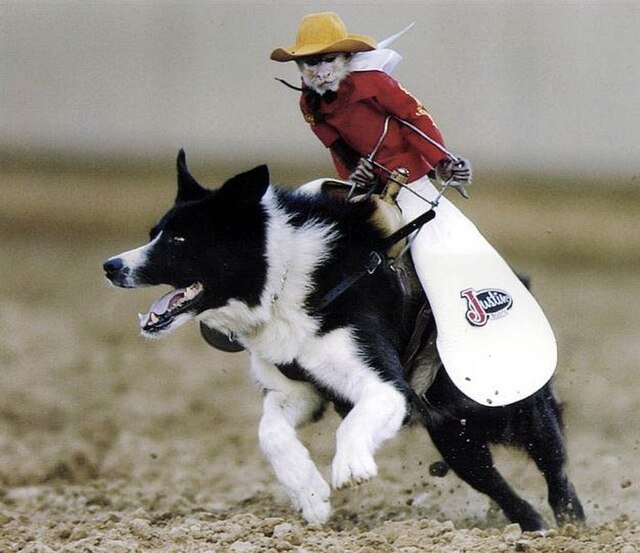
ABSTRACT ARTISTS
Zoo-kept Capuchins have been employed to paint abstract art – often as a fundraiser. The usual method employed is that of fingerpainting on canvas using oil paint. The art pieces carry a surreal energy and are valued by collectors. Other animals who paint are Chimps, Orangutans, Elephants, Pigs (snout painting vs fingerpainting) and even dolphins!

STONE AGE MONKEYS?
Capuchins are thought to be among the top 10 most intelligent primates – the White-Faced Capuchins in particular have been observed to use stones and anvils to crack open nuts, beach almond fruit and coconuts as well as the shells of snack animals like snails and crabs. They also use sticks against snakes to protect themselves, to free an infant from the grip of a larger serpent, or to probe dark crevasses or tree hollows.
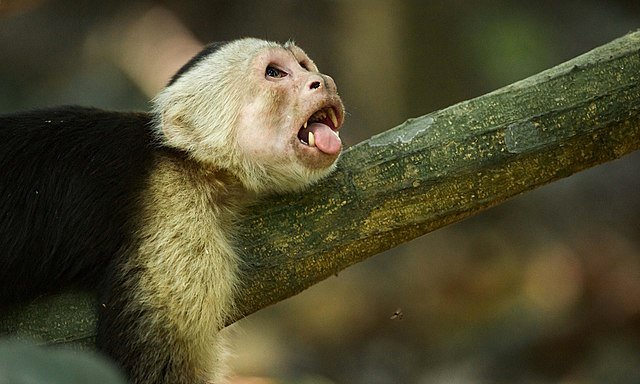
And yes, together with the Chimpanzee and Burmese Long-Tailed Macaque, the Capuchin species (especially wild species of Brazil) are considered to have entered the stone age. The only other animal in this club is the Sea Otter which uses rocks to smash the shells of shellfish and crustaceans – however a few others are fairly close as they use sticks or other objects but are not yet known to use stones (like crows, dolphins, and elephants).
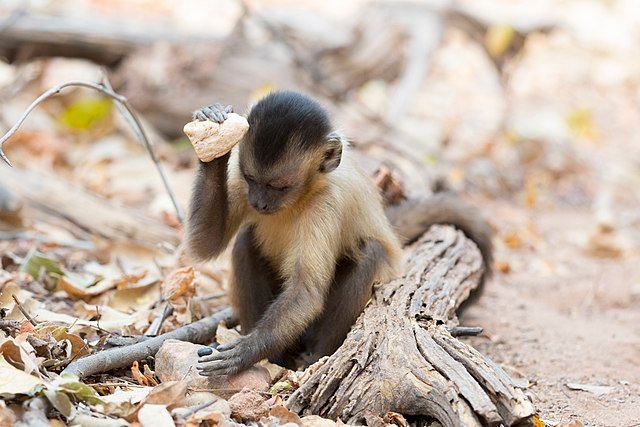
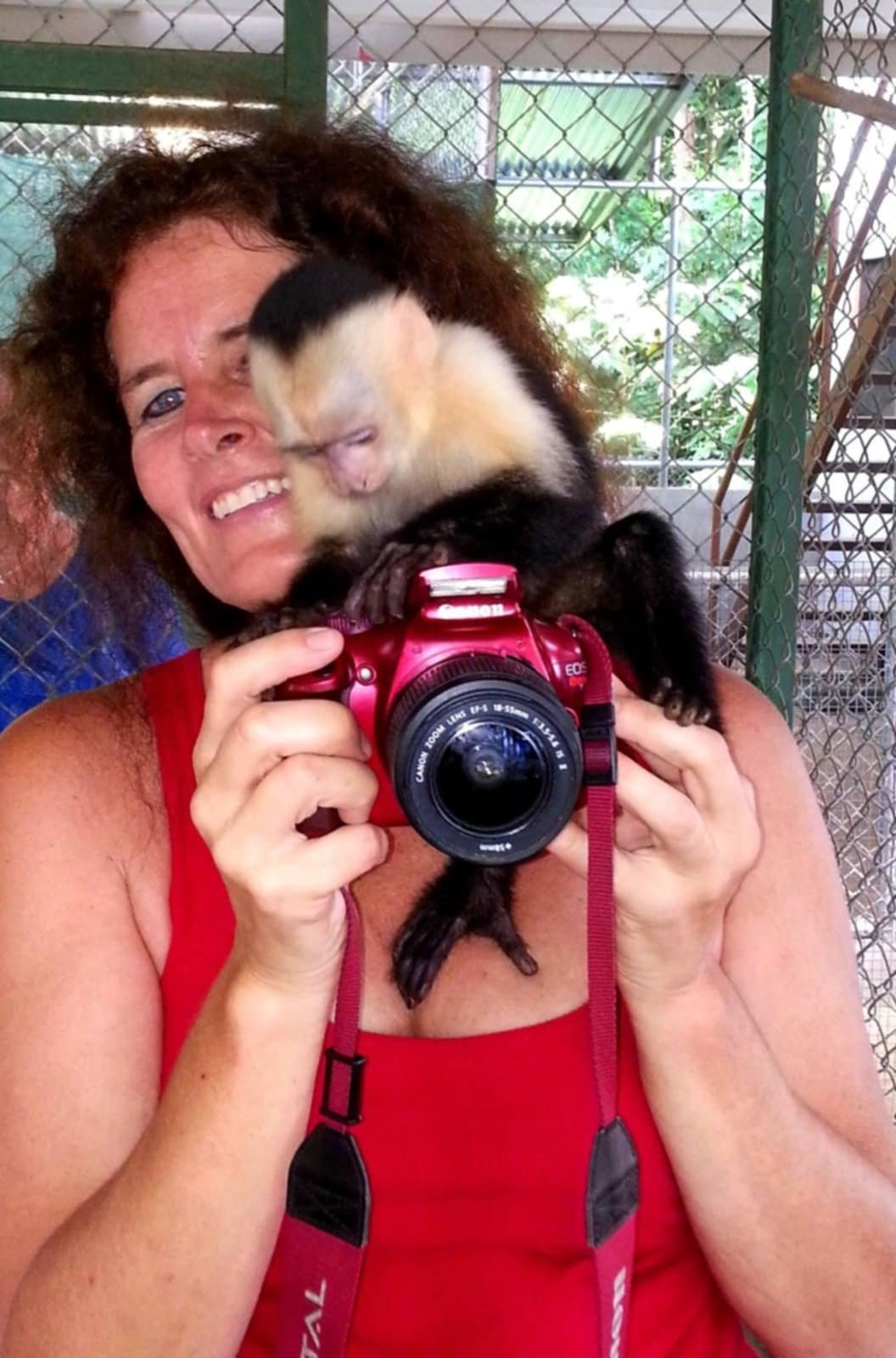
LOOK OUT AND TAKE COVER!
Costa Rica’s Capuchins are known to freely demonstrate their discontent with humans – if agitated they will scream, shake branches, urinate, or freely throw sticks, fruits or their droppings towards the unfortunate tourist (most locals and expats would be LONG gone)! I once witnesses entire families picnicking at Ventanas Beach hurriedly pack up their belongings and relocate as a troop of Capuchins was moving, through the canopies, straight towards their chill out spots. This is normal monkey behavior as they are simply guarding their territory and protecting their females and young.
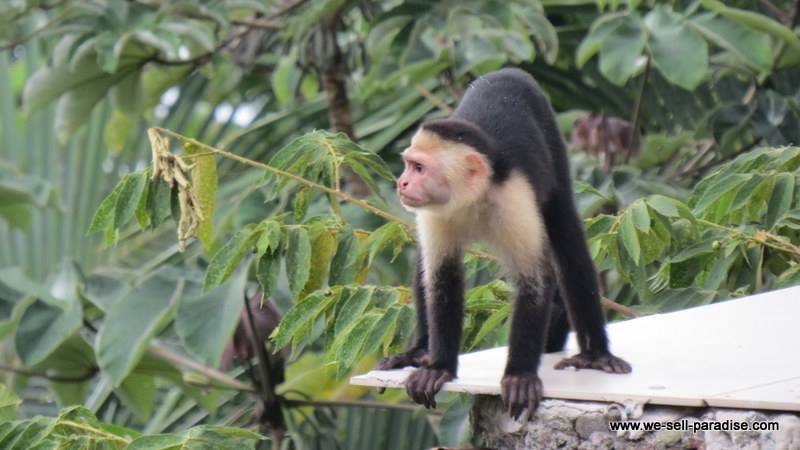
The monkeys can, however, become assertive and even aggressive towards people when food is involved. In some tourist hot spots like Manuel Antonio, the Capuchins often invite themselves into the restaurants and steal food right from the plates of frightened diners. They will also enter local homes and rummage through the kitchens.
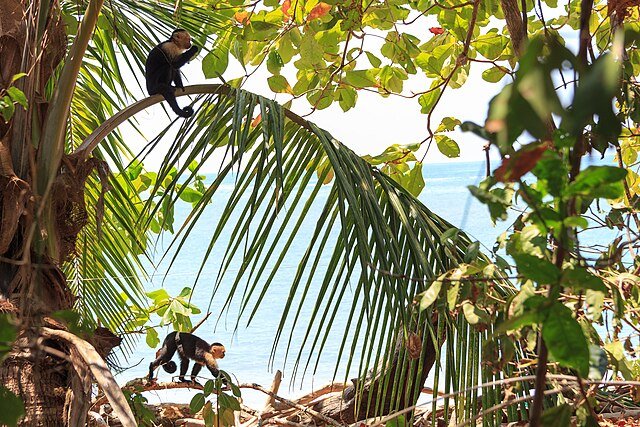
But more often than not, they will curiously observe and approach people in the hopes that something tasty is thrown their way. Thus where trouble-monkeys roam, this is often due to human behavior – as people intentionally feed the monkeys or invite them inside their hotels for a quick Instagram-photo op, the monkeys learn problematic behaviors and pass them on to their offspring.
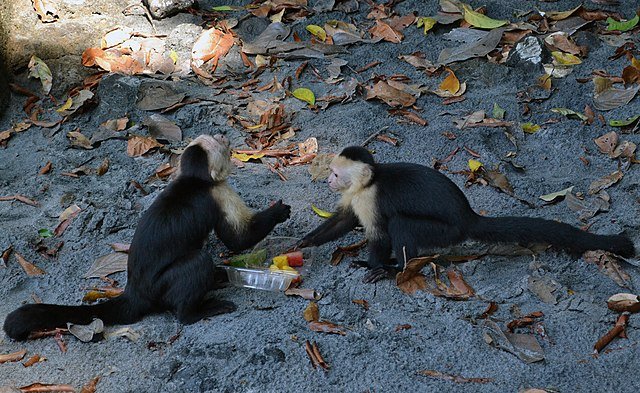
WHAT’S IN A NAME?
Like their Costa Rican compatriots Mantled Howler Monkeys , Capuchins trace their name to an ancient European item of clothing (or more precisely, the people who wear that clothing) – in this case it is the Order of Friars Minor Capuchin, who wear dark hooded robes. When worn by the monks, these robes resemble the dark-colored areas of the Capuchin Monkeys.
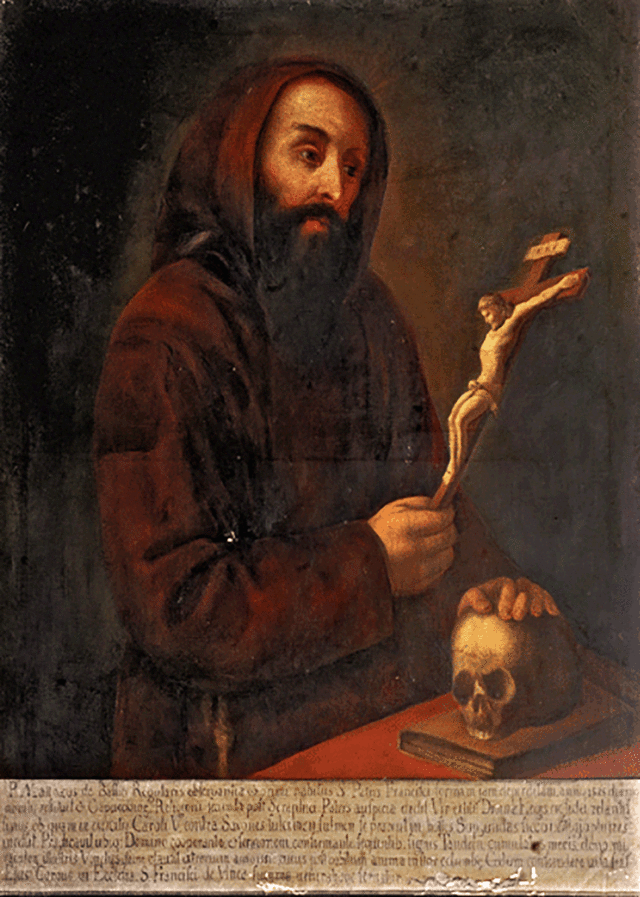
BEHAVIOUR
White-Faced Capuchins live in troops of between 10 and 40 individuals. When two groups meet, trouble usually ensues – the males become aggressive towards each other and sometimes fight to the death while the females grab their infants and run. Interestingly, the group with more or stronger males is usually defeated and driven off IF the encounter happens deep outside their territory. When on even ground, the group with more or stronger males is the usual winner.
Conflicts flare during the dry season – since Capuchins like to drink daily, when streams and ponds dry up there can be a lot of fighting & bickering around the few remaining water holes.
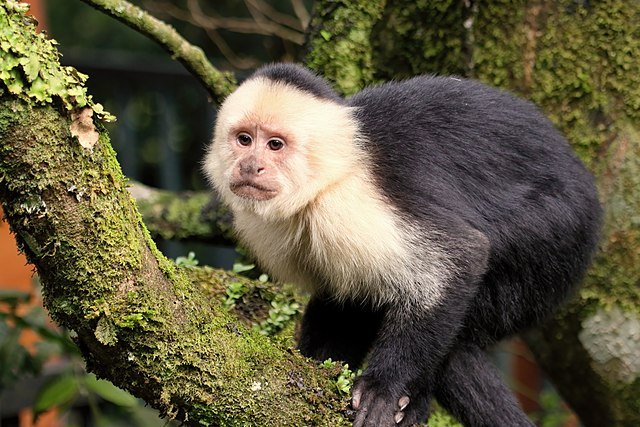
The most common cause of death for Capuchin monkeys is by the hand of another monkey – usually a bigger and stronger male. And since males tend to switch troops every 4 years, and do so with a group of kin, there is always the threat of conflict between a troop and a roaming group of males. For this reason, close male alliances are held within each troop, and while males may bicker and fight over food or status, if they come upon a common enemy they quickly unite in battle.
While females usually spend their lives with their kin, the males migrate between groups multiple times during their lives – starting at the tender age of 2 years old. The males usually migrate along with their kin, however the Alpha Male tends to stay put in the same troop – in some cases up to 17 years. So the competition for the top of the pack can be fierce! And this can also lead to a lot of closely related monkeys – for this reason the Alpha Males tend not to mate with their daughters, leaving that task to the subordinate male monkeys. But even so, the Alpha has many sisters and half-sisters with the troop.
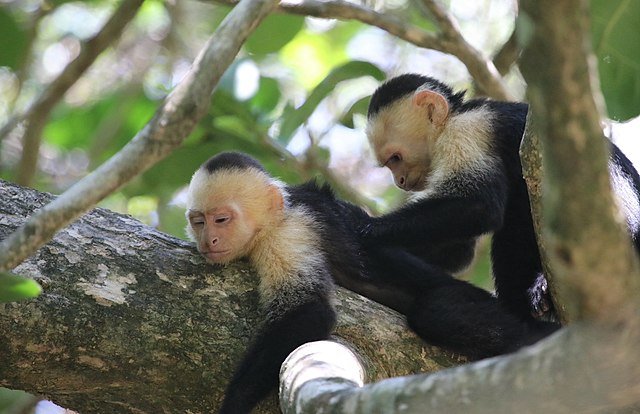
DIET
Thanks to their varied diet, Capuchin monkeys are less threatened by habitat loss than many other species. They will happily eat an estimated 95 different species of fruit – and are very picky, eating only ripe & sweet fruit. They will test for ripeness by smelling and squeezing the fruit. And seeds or stringy fibers are promptly spat out. Other than fruit, Capuchins will feed on flowers, seeds, and young leaves.
But they are by no means strict vegans – insects such as beetles, butterflies, larvae, ants and wasps are surely on the menu, as are birds, bird eggs, frogs, lizards, crabs, mollusks, and small mammals. The Guanacaste population actively hunts squirrels, magpies, baby coatis and parrots.
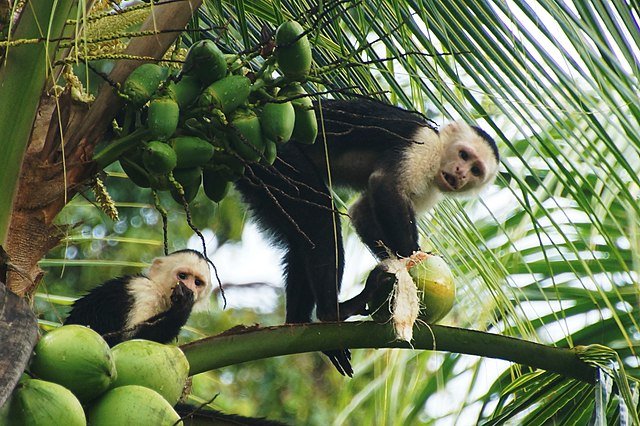
PREDATORS
When it comes to predators, we see a familiar list: jaguars, cougars, jaguarundis, coyotes, tayras, snakes, crocodiles, and birds of prey can take both young and adult Capuchins. Humans are known to hunt the monkeys for bush meat as well, and in some areas constitute the biggest threat to Capuchins.
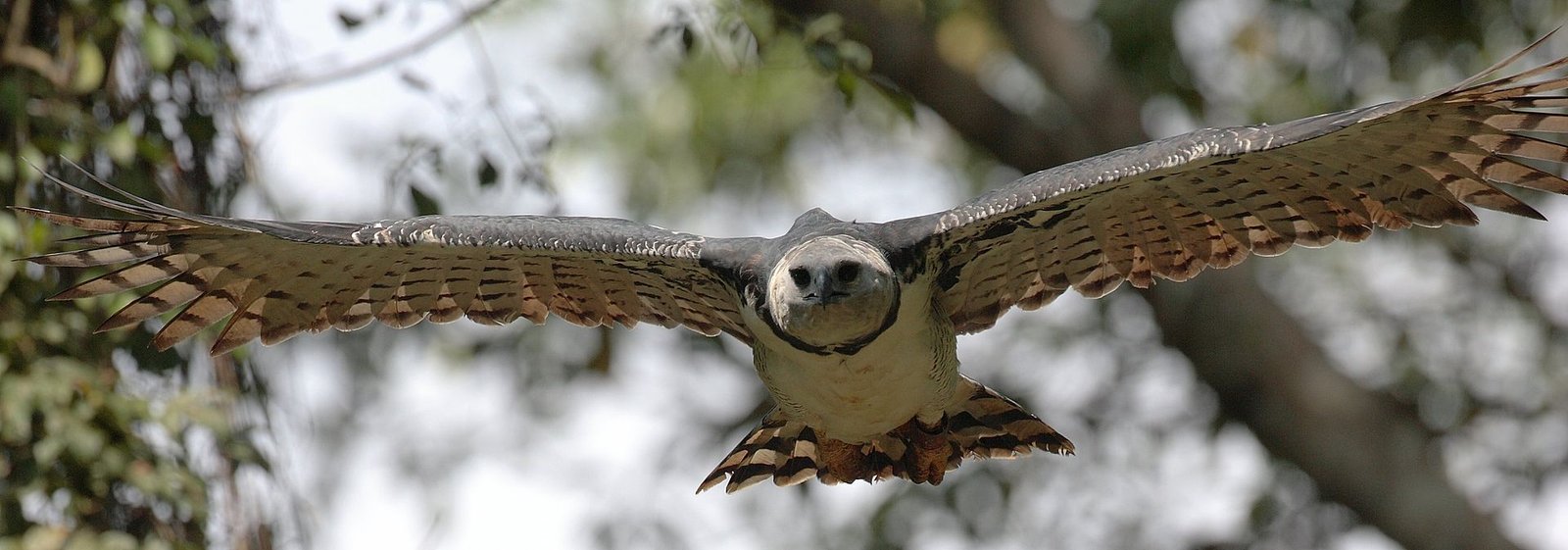
RANGE & CONSERVATION STATUS
The Panamanian White-Faced Capuchins (Cebus imitator), present in Costa Rica, range from Honduras to Panama. A sister specie, the Colombian White-Faced Capuchins (Cebus capucinus), can be found in Panama, Colombia and Ecuador. The monkeys are listed as vulnerable, being common in some range countries and very uncommon in other nations. Luckily their varied diet helps them to survive in altered areas like towns, gardens, and plantations – so they are not totally dependent in thick forests.
Interestingly, Capuchins are somewhat benefiting from life in altered environments – as the destruction of virgin forests is very hurtful to one of their main predators, the Harpy Eagle.
Do you dream of living amongst the jungles, surrounded by amazing animals like our mischievous Capuchin Monkeys? RE/MAX WE SELL PARADISE lists hundreds of tropical properties – homes, land, farms, estates & businesses – all within a stone’s throw of the amazing rainforests, mountains and beaches that make Costa Ballena a world-famous destination. See our wonderful & tropical property listings here.
Cover image courtesy of Tomáš Malík, Pexels.



